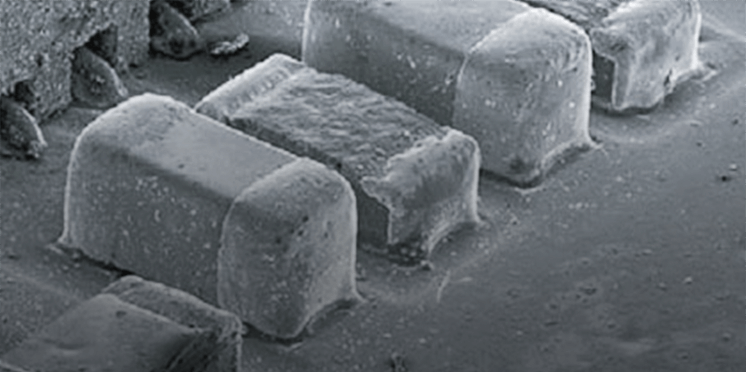走査低エネルギー電子顕微鏡
走査低エネルギー電子顕微鏡
scanning low energy electron microscope, SLEEM
[目次:理論(電子の散乱/回折/結像)]
試料に対する入射電子のエネルギーを数十から数百ボルトに低減して、細いプローブを試料上で走査し、試料で散乱した電子および二次電子を検出して、表面の像を形成する装置。表面の情報を得るために試料周りは超高真空に保たれる。通常、SEMに改造を加えて作られるので、SEMに使われている二次電子検出器やビームの走査系を利用している。試料に負の電位を印加することにより、試料近傍に減速電界すなわち陰極レンズが形成される。印加電位を可変することにより入射電子のエネルギーを可変することが可能になり、低い入射エネルギーで高い分解能が得られる。入射エネルギーが10eVのとき10nmが得られている。
A "SLEEM (scanning low energy electron microscope)" is an instrument to form a surface image, in which the SLEEM image is obtained as follows. An incident electron beam with an energy of several 10 V to several 100 V is used. A small-sized focused electron probe is scanned over the surface of the specimen. Scattered electrons and secondary electrons from the specimen are detected by a SEM detector. To obtain surface information, the specimen area is kept at ultra high vacuum. The SLEEM instrument is usually made by modifying a SEM instrument, thus the beam scan system and secondary electron detector for the SEM instrument are used for the SLEEM instrument. Applying a negative voltage to the specimen gives rise to the formation of a cathode lens or a retarding electric field near the specimen. By varying the value of the negative voltage, the energy of the incident electron beam is varied. A high image resolution is attained at a low incident energy. The present SLEEM achieves a resolution of 10 nm at an incident energy of 10 eV.
関連用語から探す
説明に「走査低エネルギー電子顕微鏡」が含まれている用語






